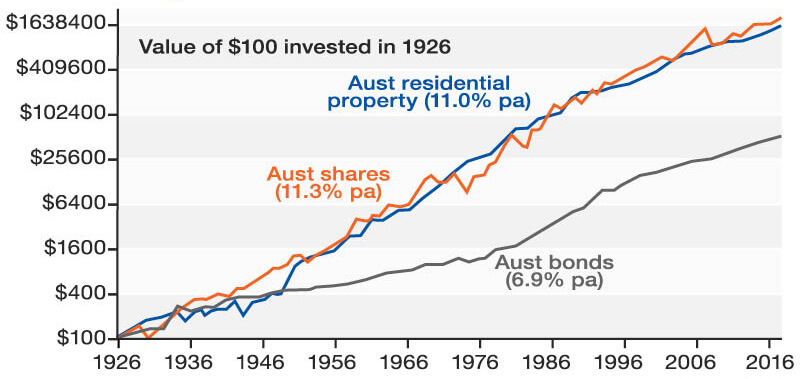Volatility is here to stay
Volatility is part and parcel of investing so it's important to put it into perspective and look at the full picture when thinking about your wealth, rather than focus on day-to-day market swings.
If there was to be a single investing lesson that emerged from the events of the last two years, it is that we should learn to expect the unexpected.
And with that in mind we should acknowledge that volatility is part and parcel of investing.
There are several ways to measure volatility – the VIX index or as it is colloquially known the “index of fear” being perhaps the best empirical measure. But there is a simpler measure of market volatility that is much closer to home and that is when friends and family start calling to ask “what is happening to my super”. That is when market falls have got people’s attention.
And for the near term at least, we will probably continue to experience more market bumps and drops for a while. For those approaching or already in retirement, accepting that market volatility is here to stay could possibly induce a few sleepless nights, especially for those who keep an ever-watchful eye on their investment portfolios.
But while dramatic market losses can sting, it is important to keep a long-term perspective in order to participate in the recoveries that follow. Research shows that the average length of a bear market is 236 days while bull markets on average have lasted 852 days, leaving investors well compensated for the long-term risk they took on.1
So a long term perspective is extremely important, but so too, is context.
Take a moment to pause and look at the big picture. If you only view your shares or superannuation portfolio balance in isolation to everything else, then recent market volatility will have been of concern with widespread impact across most equity and bond investment portfolios in the past few months. At the time of writing, the ASX/S&P300 is down around 6% while in the US the S&P500 index is hovering around the more eye-catching -17%.
But if you were to zoom out and include other aspects of your investment portfolio – dividend payments for example, or your property value, then the overall picture is a little rosier. Dividends are particularly noteworthy during this volatile time because unlike back in 2020 when many investors had to tighten their belts or draw down on capital because payouts had been vastly reduced, most companies are still paying out some form of dividend. In this situation, the income element of share portfolios is still delivering steady returns for most investors – a particularly valuable point for investors with self-managed super funds who commonly have a strong yield tilt in their portfolios.
Also, while rising interest rates are front and centre of everyone’s minds right now, for those who own a home or have an investment property, now is a good time to remember that the property values have enjoyed strong gains during the worst of the pandemic in the last two years, far outstripping the interest rate increase aspect of the equation. Further, while landlords might be lamenting interest rate rises, according to a recent Domain report, every state in Australia is also experiencing its sharpest rental price growth in 13 years, with most rental increases keeping pace with interest rate rises.
So at times like these, remember to look at the full picture when thinking about your wealth. Your portfolio in its entirety includes your superannuation, your portfolio outside of super including shares, property and fixed income and cash. Viewed in widescreen mode, it’s likely that you’re still in positive territory despite the pull back in share market values.
These can be challenging times because when volatility is spiking the emotional response is to want do something - anything. Which is when being clear about your long-term investment goals and having an asset allocation in line with your risk tolerance can be the best antidote and help you be disciplined and stay the course.
Contact us if you need help with your investments, or would like to find out more about investing.
Source: Vanguard
1 Vanguard
Reproduced with permission of Vanguard Investments Australia Ltd
Vanguard Investments Australia Ltd (ABN 72 072 881 086 / AFS Licence 227263) is the product issuer. We have not taken yours and your clients' circumstances into account when preparing this material so it may not be applicable to the particular situation you are considering. You should consider your circumstances and our Product Disclosure Statement (PDS) or Prospectus before making any investment decision. You can access our PDS or Prospectus online or by calling us. This material was prepared in good faith and we accept no liability for any errors or omissions. Past performance is not an indication of future performance.
© 2022 Vanguard Investments Australia Ltd. All rights reserved.
Important:
Any information provided by the author detailed above is separate and external to our business and our Licensee. Neither our business nor our Licensee takes any responsibility for any action or any service provided by the author. Any links have been provided with permission for information purposes only and will take you to external websites, which are not connected to our company in any way. Note: Our company does not endorse and is not responsible for the accuracy of the contents/information contained within the linked site(s) accessible from this page.
